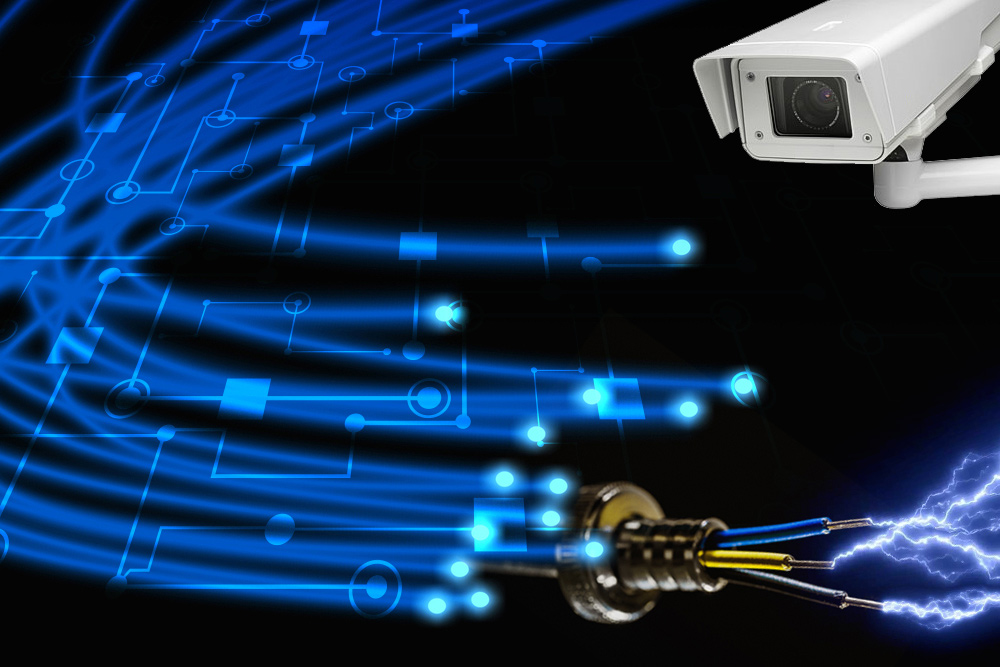How Security Fibers Are Used to Enhance the Effectiveness of Security Surveillance Systems
The Ultimate Guide to Fiber Optic Safety Equipments for Your Service
In a period where security worries are vital for organizations, comprehending the intricacies of fiber optic innovation can be transformative. This guide details exactly how integrating fiber optic security systems not just boosts data protection but likewise supplies advantages like resistance to disturbance and real-time tracking abilities.
Recognizing Fiber Optic Modern Technology

The core of a fiber optic cable is composed of a slim glass or plastic center, surrounded by a cladding layer that reflects light back right into the core. fiber optic security system. This design makes certain very little loss of signal stamina, even over comprehensive distances. There are 2 main kinds of fiber optic cables: single-mode and multi-mode. Single-mode fibers are made for long-distance transmission, while multi-mode fibers are suitable for much shorter ranges, often used within structures.
Optical fiber are not just quicker however additionally much more secure than traditional wiring. Their intrinsic resistance to electro-magnetic interference and the problem of tapping into the signal without discovery make them a favored option for companies prioritizing data integrity and security. As companies progressively rely upon protected and efficient interaction systems, comprehending fiber optic technology becomes crucial for informed decision-making.
Key Advantages of Fiber Optic Security
When taking into consideration protection alternatives for an organization, the benefits of fiber optic systems are particularly engaging. Fiber optic modern technology supplies phenomenal information transmission rates and data transfer capability, making it optimal for dealing with high-resolution video clip feeds from monitoring cams. This capability makes sure that protection personnel get real-time data, boosting total action times to potential security threats.
Additionally, fiber optic cables are inherently immune to electromagnetic interference, which can jeopardize the integrity of conventional copper-based systems. This resistance makes certain that the data transmitted stays protected and continuous, giving an extra trusted safety infrastructure. Additionally, fiber optics are less at risk to physical damage, as they are made from glass instead than steel, lowering upkeep costs and downtime.
Fiber optic systems supply boosted cybersecurity attributes, consisting of file encryption abilities that secure sensitive data from unauthorized gain access to. Jointly, these advantages make fiber optic security systems a durable selection for businesses looking for to enhance their security procedures.
Installment Refine and Factors To Consider
Thinking about the intricacies entailed, the installment procedure of fiber optic safety systems needs mindful planning and execution. The preliminary step involves a detailed site analysis to recognize ideal places for cabling and equipment. This assessment needs to take into consideration environmental variables, existing framework, and prospective susceptabilities.

Furthermore, the installation should follow regional building regulations and market standards. This might consist of collaborating with different stakeholders such as building supervisors, IT groups, and safety and security personnel to guarantee seamless assimilation with existing systems.
Post-installation, strenuous screening is required to validate system performance and determine any concerns that may arise. By focusing on these considerations during the installation procedure, organizations can make sure a robust and reliable fiber optic safety and security system that satisfies their details safety needs.
Most Current Developments in Fiber Optic Protection
Current improvements in fiber optic technology have dramatically enhanced the capacities of safety systems for organizations. One of the security fibers most remarkable developments is the assimilation of fiber optic sensors that can spot resonances and intrusions along the border of a facility. These sensing units give real-time tracking, enabling quick response to potential violations.
In addition, the development of distributed fiber optic noticing innovation enables the continuous tracking of huge areas with a single fiber wire. This method not only minimizes installment costs yet also improves the dependability of checking systems by eliminating the need for numerous, separate sensors.
Furthermore, improvements in multiplexing strategies have actually allowed companies to transfer large amounts of data over fiber optic networks, improving the abilities of video clip surveillance systems. High-definition video feeds can currently be sent out over lengthy ranges without loss of high quality, guaranteeing that safety and security workers have access to clear and actionable information.
Lastly, using expert system (AI) along with fiber optic systems is revolutionizing threat discovery. AI formulas can analyze data from fiber optic networks to recognize uncommon patterns or habits, enabling proactive protection steps. These developments collectively stand for a significant leap forward in fiber optic safety innovation.
Choosing the Right System for Your Business
Picking the proper fiber optic safety and security system for your company is vital for making sure optimal security and assurance. To make an informed selection, examine your details safety needs, taking into consideration aspects such as the size of your facilities, the nature of your procedures, and prospective vulnerabilities.
Begin by reviewing the degree of safety required; for example, high-risk environments might require innovative systems with integrated security and intrusion detection capabilities. Next off, consider scalability; as your company expands, your safety and security system need to can expanding to fit raised demands without substantial overhauls.
In addition, explore the reliability and efficiency of numerous systems. Look for companies with recognized track records and client testimonies that vouch for their solution top quality. It's additionally suggested to ask concerning the modern technology's compatibility with existing facilities, making sure a seamless combination process.
Verdict
Finally, fiber optic protection systems offer a durable option for improving company protection infrastructures. The assimilation of high-speed information transmission, resistance to electromagnetic interference, and progressed surveillance capacities considerably improves overall defense (fiber optic security system). By comprehending the innovation, recognizing its advantages, and considering the installment procedure, companies can make enlightened decisions. The most up to date developments additionally reinforce the performance of these systems, guaranteeing that businesses continue to be safe and adaptable in an ever-evolving danger landscape.